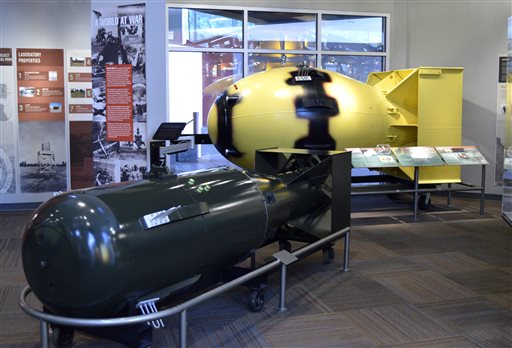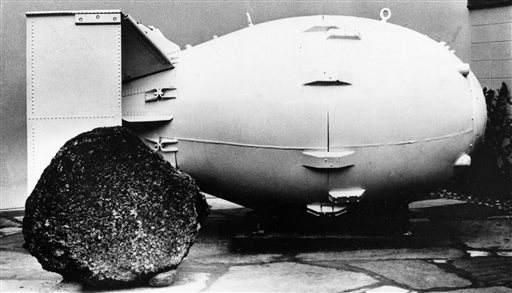ALBUQUERQUE, N.M. (AP) — People who lived near the site of the first atomic bomb test in the New Mexico desert and later developed cancer and other health problems need to be compensated, a U.S. senator said Thursday.

The federal government neglected residents of the historic Hispanic village of Tularosa near the Trinity Site, where the weapon was detonated on July 16, 1945, Sen. Tom Udall, D-N.M., said in a speech on the Senate floor on the 70th anniversary of the test.
“The rest of the world didn’t know about the tragedies that happened in the Tularosa Basin. For a long time, the government denied that anything happened at all,” Udall said. “Attention was not paid then. It must be paid now.”
Udall met with residents and family members who lived near the test site and shared stories about relatives dying from cancer. He said he believes they should be included in the federal Radiation Exposure Compensation Act program, which could provide a $50,000 payout.
Nicole Navas, a spokeswoman for the U.S. Justice Department’s Civil Division, which oversees the program, said lawmakers would have to amend the act to expand payouts to New Mexico residents. Now, the law only covers areas in Nevada, Arizona and Utah that are downwind from a different test site.

“Because this downwind area is defined by federal statute, the Department of Justice lacks discretion to expand the area to include locations in New Mexico downwind of the Trinity test,” Navas said.
The blast sent out a flash of light seen as far as nearly 300 miles away, and Army officials said at the time it was a result of an ammunition explosion. Residents did not learn it was an atomic bomb until the U.S. dropped the weapon on Japan a month later, helping end World War II.
Many of those living near the Trinity Site were not told about the dangers and later suffered rare forms of cancer, Tularosa residents say. They say they want acknowledgement and compensation from the U.S. government.
Researchers from the National Cancer Institute are studying past and present cancer cases in New Mexico that might be related to the test. A previous study done by the federal Centers for Disease Control and Prevention found exposure rates near the Trinity Site were thousands of times higher than allowed.

Tina Cordova, co-founder of the Tularosa Basin Downwinders, said she was pleased the country finally was talking about the effects of the bomb on nearby residents.
“This is part of the story that shouldn’t be ignored any longer,” Cordova said.
The test took place in southern New Mexico as part of the Manhattan Project, the secretive World War II program that provided enriched uranium for the atomic bomb.
During the project, Los Alamos scientists worked to develop the weapon dropped on the Japanese cities of Hiroshima and Nagasaki. It involved three research and production facilities at Los Alamos; Oak Ridge, Tennessee; and Hanford, Washington.
New Mexico’s three congressional representatives joined Udall in supporting changes to the Radiation Exposure Compensation Act to include New Mexico residents.

Rep. Ben Ray Lujan, D-Santa Fe, said in a statement that the 70th anniversary of the Trinity Test should include commemorations to the scientific accomplishments as well as to unknowing suffering by residents.
“We remember those who continue to bear the costs of nuclear testing decades later and recommit to seeking recognition and compensation for the men and women who have been gravely impacted,” Lujan said.
Under the act, individuals who reside in a specified downwind county for the required period of time and contracted a covered disease are eligible for a one-time $50,000 lump sum award.
To date, the Justice Department has awarded nearly $950 million for about 19,000 downwind claims, officials said.
•••
Follow Russell Contreras at http://twitter.com/russcontreras.
Copyright 2015 The Associated Press. All rights reserved. This material may not be published, broadcast, rewritten or redistributed.
- Radiation exposure clinic accepting patients; funding for Downwinders -2014
- Giving downwinders a global voice; St. George woman represents USA at Vienna Nuclear Conference -2014
- On the EDge: Time for a memorial for our downwinders
Email: [email protected]
Twitter: @STGnews